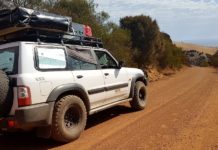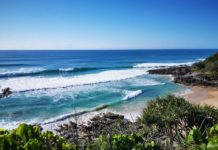
Surfing is a very Australian way of life, with countless and endless amazing beaches, offering both beach breaks and reef breaks along the coastline. The beach culture has always been an integral part of their lifestyle. Surfers of all age and sex are part of a strong community and kids were born on the coast with a gift to surf. While more and more backpackers come every year, we want to share with you some of the best surf spots not to be missed in Australia.
Waiting and joining the queue to fight the crowds is not for you? Check out these ten best unmissable surfing spots, where the journey promises to be as epic as the ride on it. Wild, sharky, sharp reef…don’t fit the standard mold. Would you be ready? We promise it’s worth it.
Table of Contents
Tea Tree Bay, Noosa (Queensland)
From the National Park car park, follow the track for 500m through a dense gumtree forest. Keep an eye out for koalas, they are not so far.
You will see a right point break, breaking on mainly sandy and patchy rock bottom. The best conditions comes with a NE-E swell and south wind, what can give a 2-300m ride.
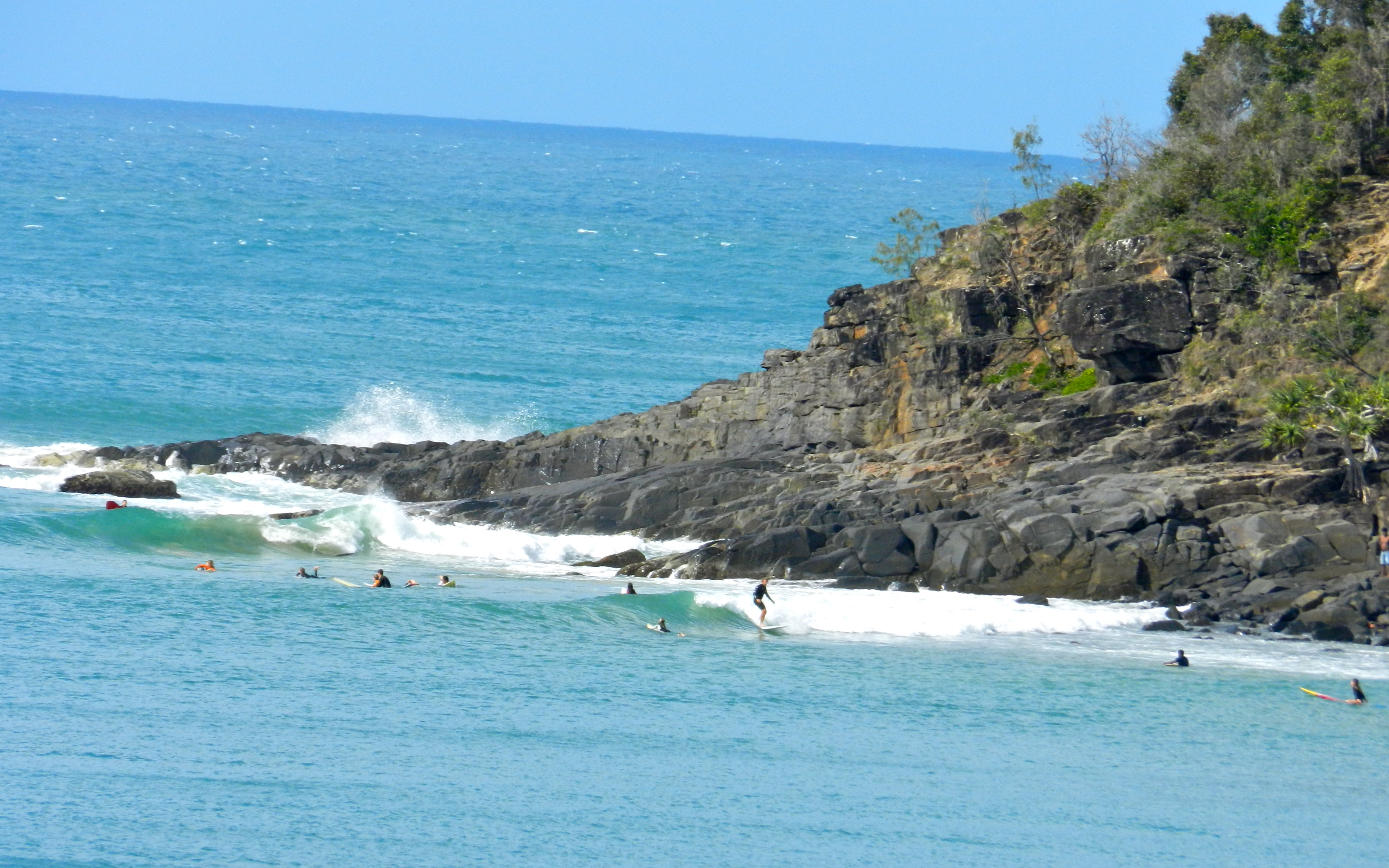
Currumbin, Gold Coast (QLD)
Further north from the famous and crowded Kirra, Coolangatta or Snapper Rocks, you will discover a welcoming estuary in this little and peaceful town. The wave breaks off a rocky point into the entrance of the creek, over a sandy bottom. Sometimes, it can be quite powerful and advised for advanced level surfers only. Other good options are abundant around.
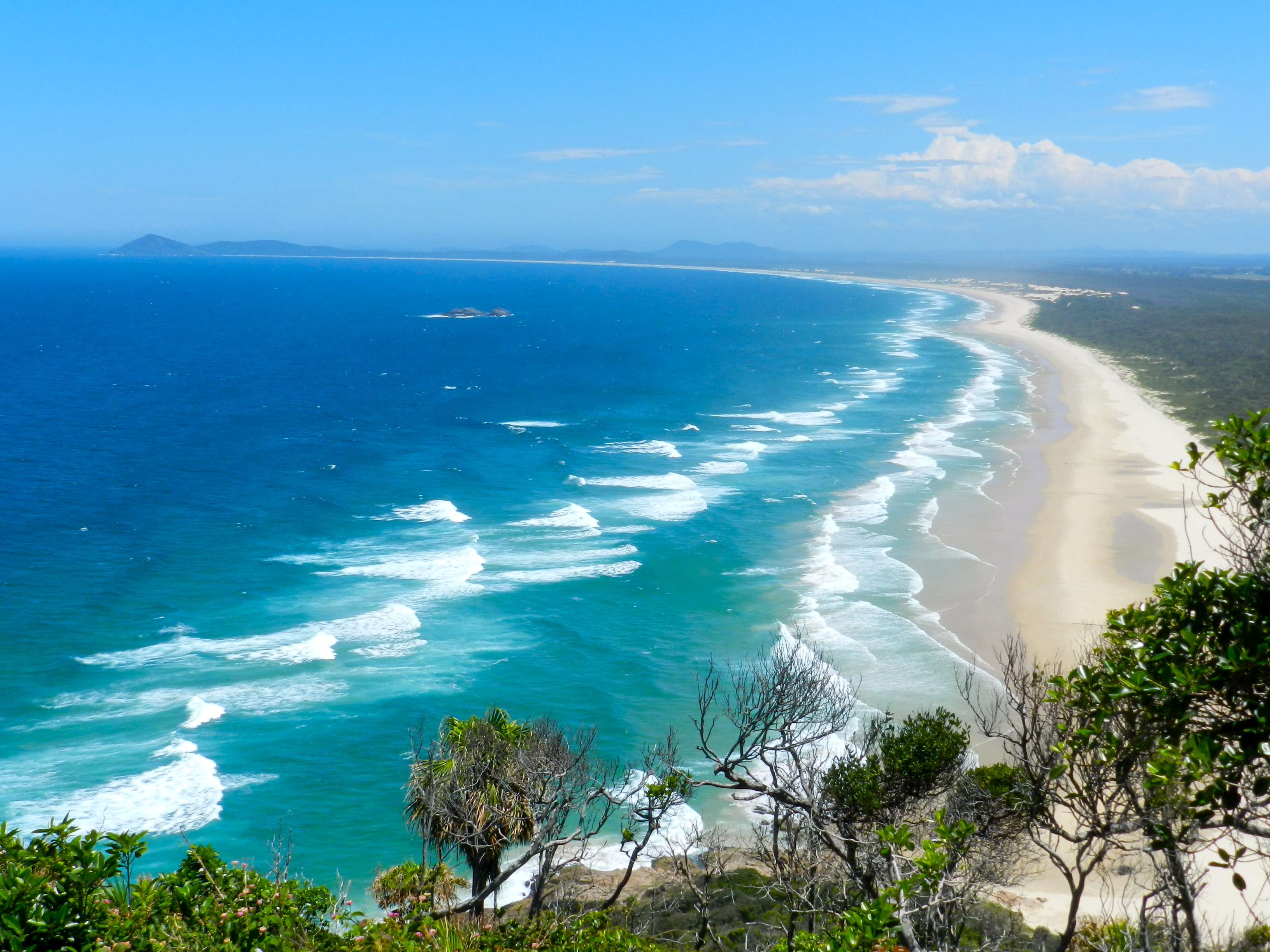
Tallows Beach, Byron Bay (NSW)
Byron Bay is a popular surfing destination with top-quality waves for surfers of all levels. This area is also known for its stunning landscapes, trendy cafes, and lively nightlife.
Tallows Beach is THE SPOT without tourists in Byron Bay. It is located near the famous Cape Byron lighthouse, which you can see in the distance. The location is protected from NE winds, giving you the opportunity to catch both lefts and rights that will thoroughly satisfy you. Breaking on sand and rock bottom, you can get a pretty heavy shore-break on this beach. In Byron Bay, surfing is primarily a way of life. You can immerse yourself in the hippie vibe that prevails in this small town like nowhere else. Finally, be respectful of other surfers during your visit.
The Pass is also a popular surf spot in Byron Bay, offering easy-to-surf waves for beginners as well as more powerful waves for experienced surfers.
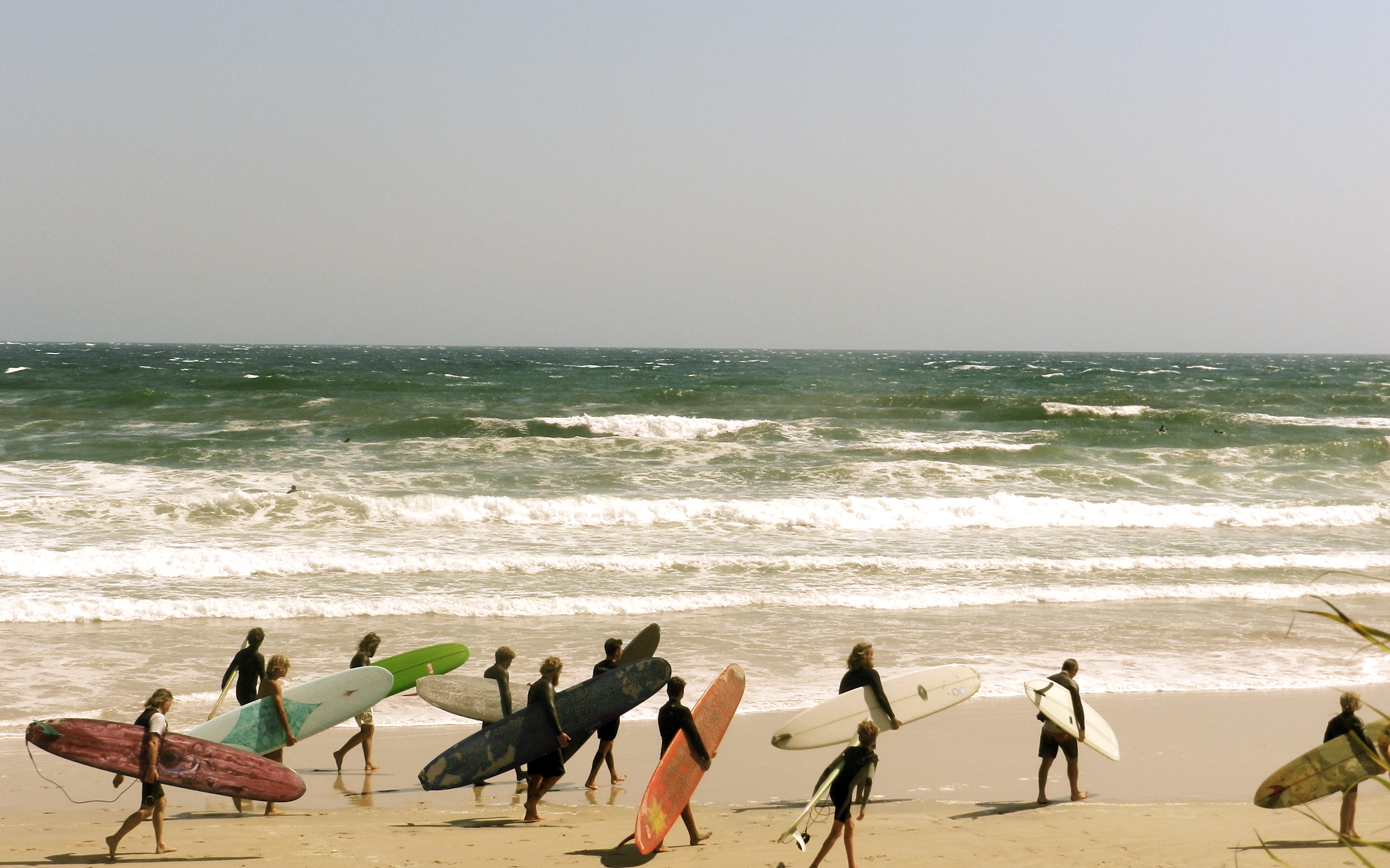
Macauleys, Coffs Harbour (NSW)
Better to get up early morning for this one. The best option is to park your camper-van not too far the night before (but not on the parking right in front, you might get troubles with the ranger). These waves are gentle and perfect for beginners, not too far from the shore so you won’t need to paddle kilometres. It’s a popular spot with locals, so as always, be respectful of other enthusiasts.
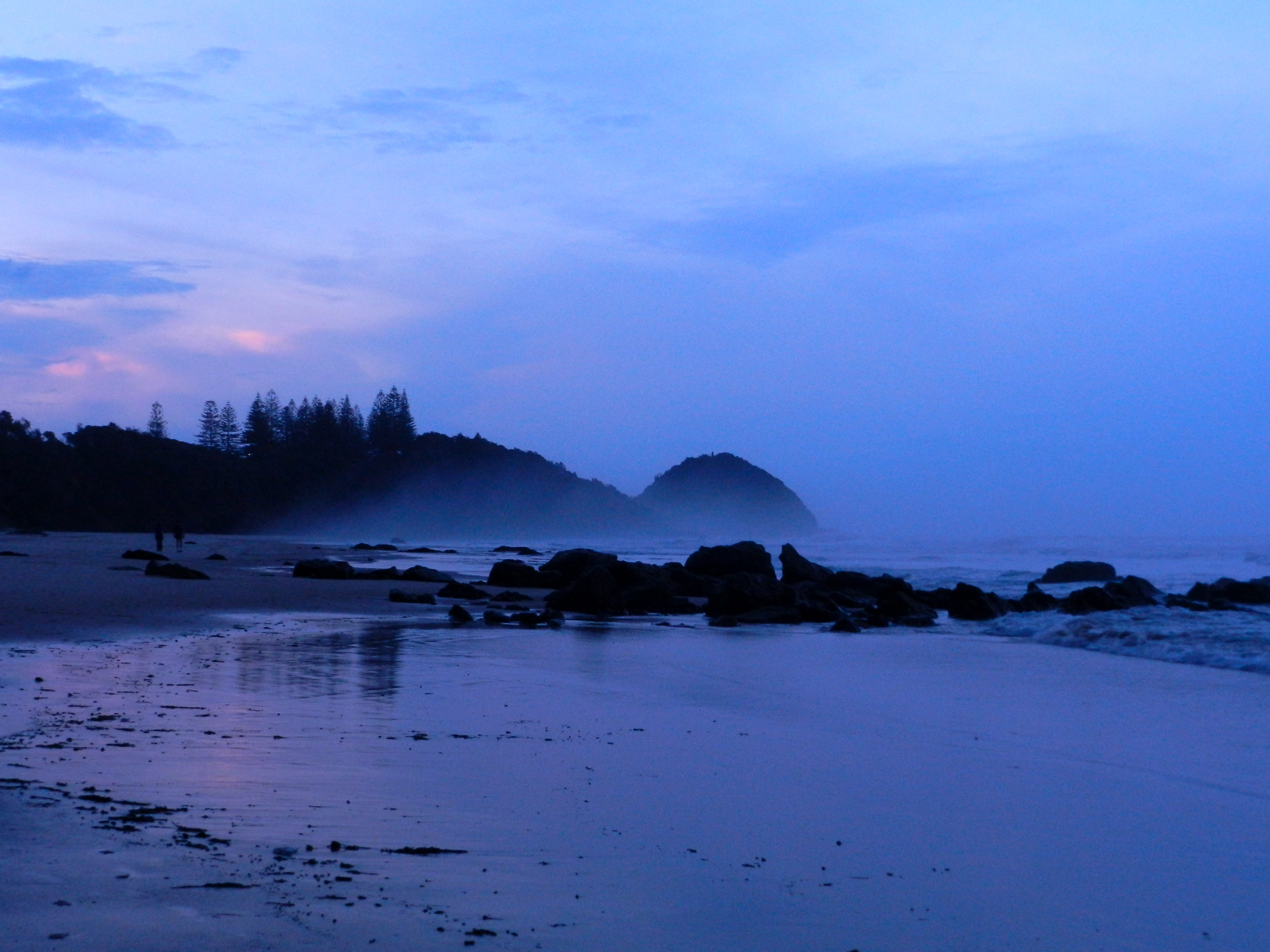
Boomerang beach, Forster (NSW)
Hard to forget this one, according to its very large and open beach offering a multitude of peaks. A beautiful beach-break giving both lefts and rights with all sorts of tides. Banks are moving quite a lot, so we can’t guarantee how long it will stay there. You should keep an eye out for dolphins, these guys like riding waves too.
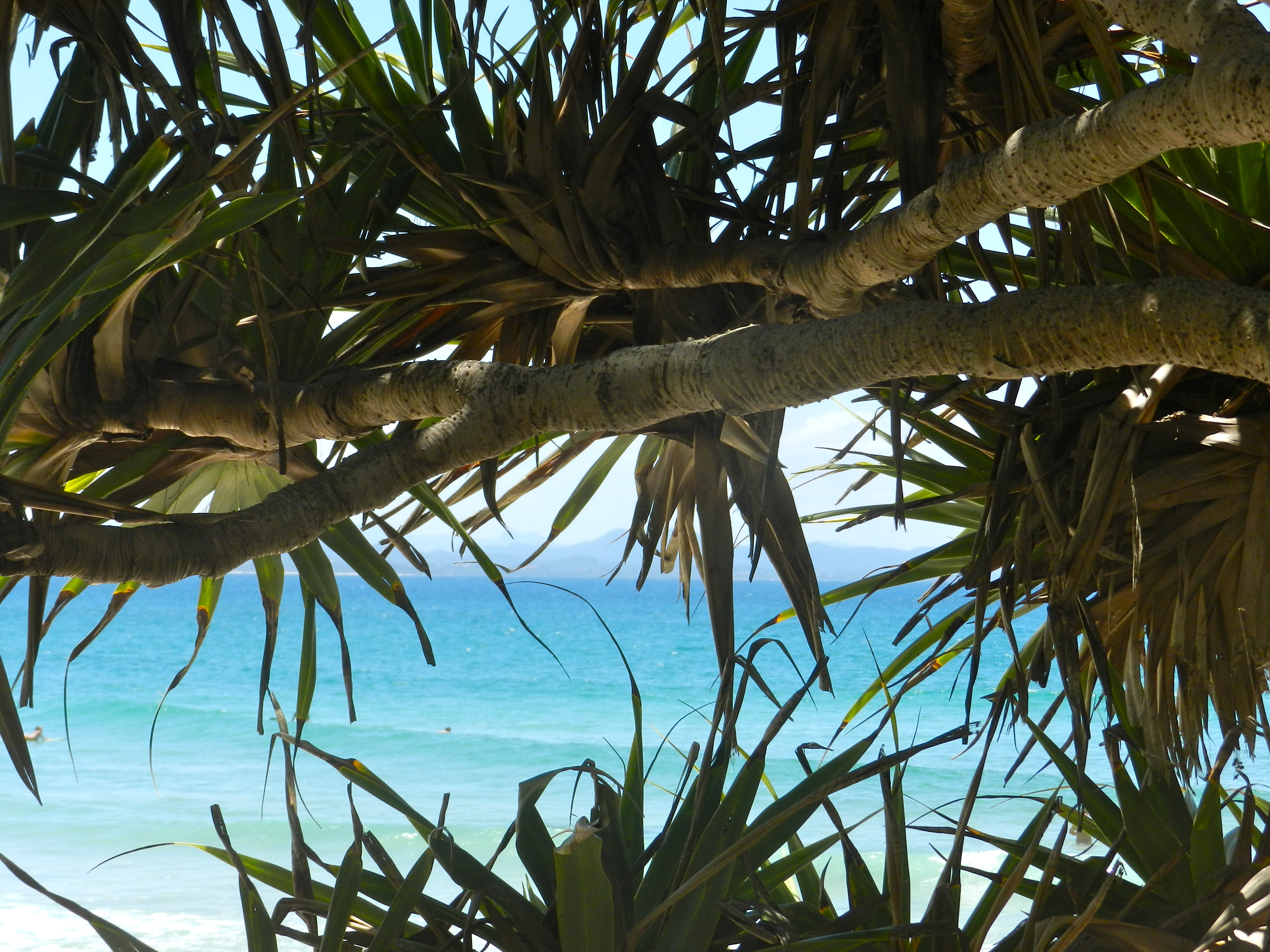
Lorne (VIC)
West of Torquay and the famous Bell’s beach where took place the World Surf League, Lorne can turn out to be magical. At best, you can get a 4-500m ride. The Ocean let endless lines appear toward the horizon. Moreover, you can get great fresh fish near here.
Nearby Torquay is a popular surfing destination on the Great Ocean Road, with top-quality waves for surfers of all abilities. It is also the site of the Surf World Museum, which celebrates the history of surfing in Australia.

Margaret River, Supertubes (WA)
Great intermediate or advanced wave. After the effort, you will deserve to chill out at a little cafe nearby. In March, you can watch the best surfers in the world at the Margaret River Pro.
The Box is also a legendary surf spot near Margaret River, offering powerful, hollow waves for the most experienced surfers.
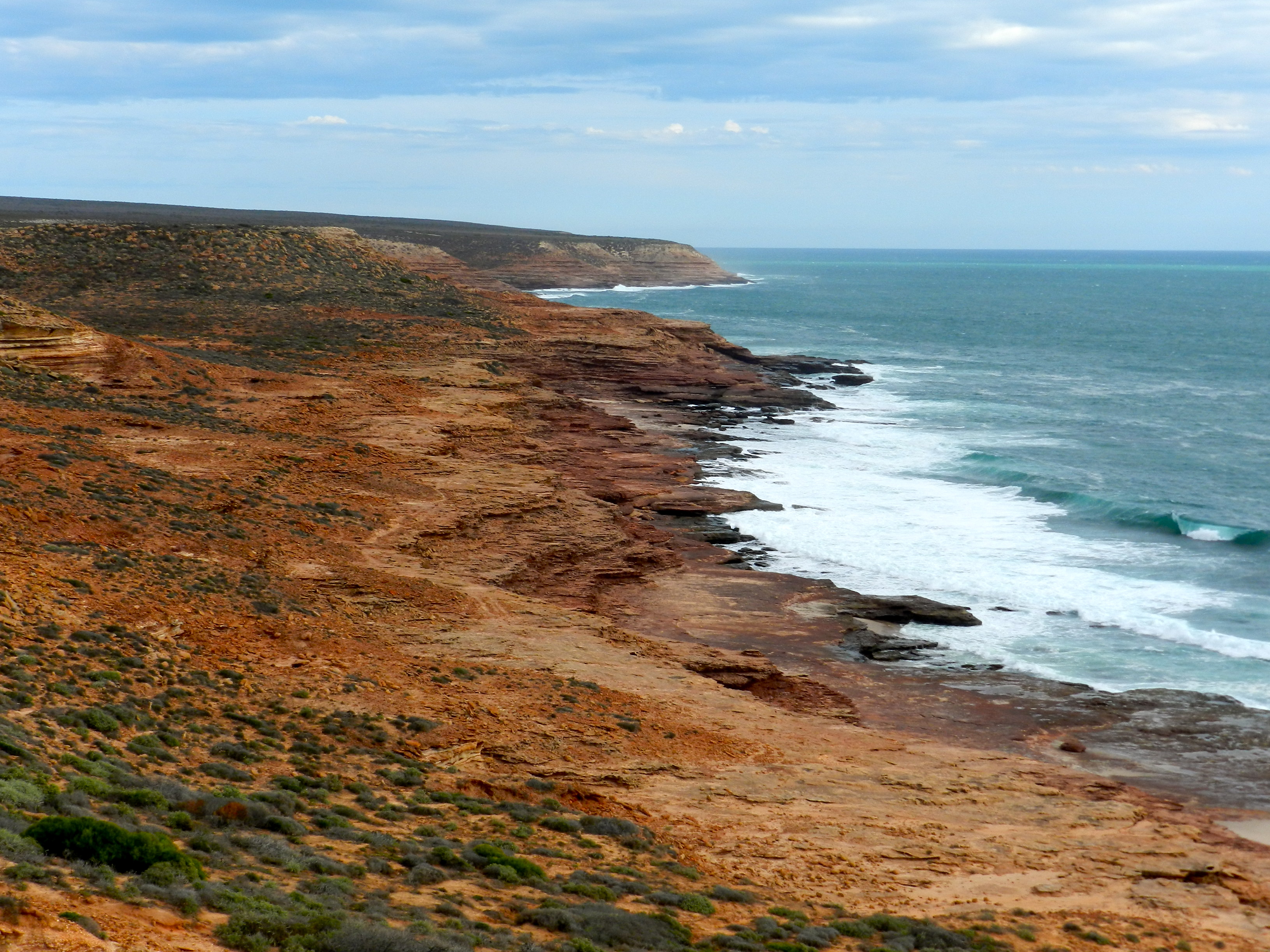
Triggs beach, Scarborough (WA)
This is a pretty good right but it can become quite crowded. If you are a beer lover and heading to Perth, stop by the brewery called “Little creatures” in Fremantle, you will not be disappointed.
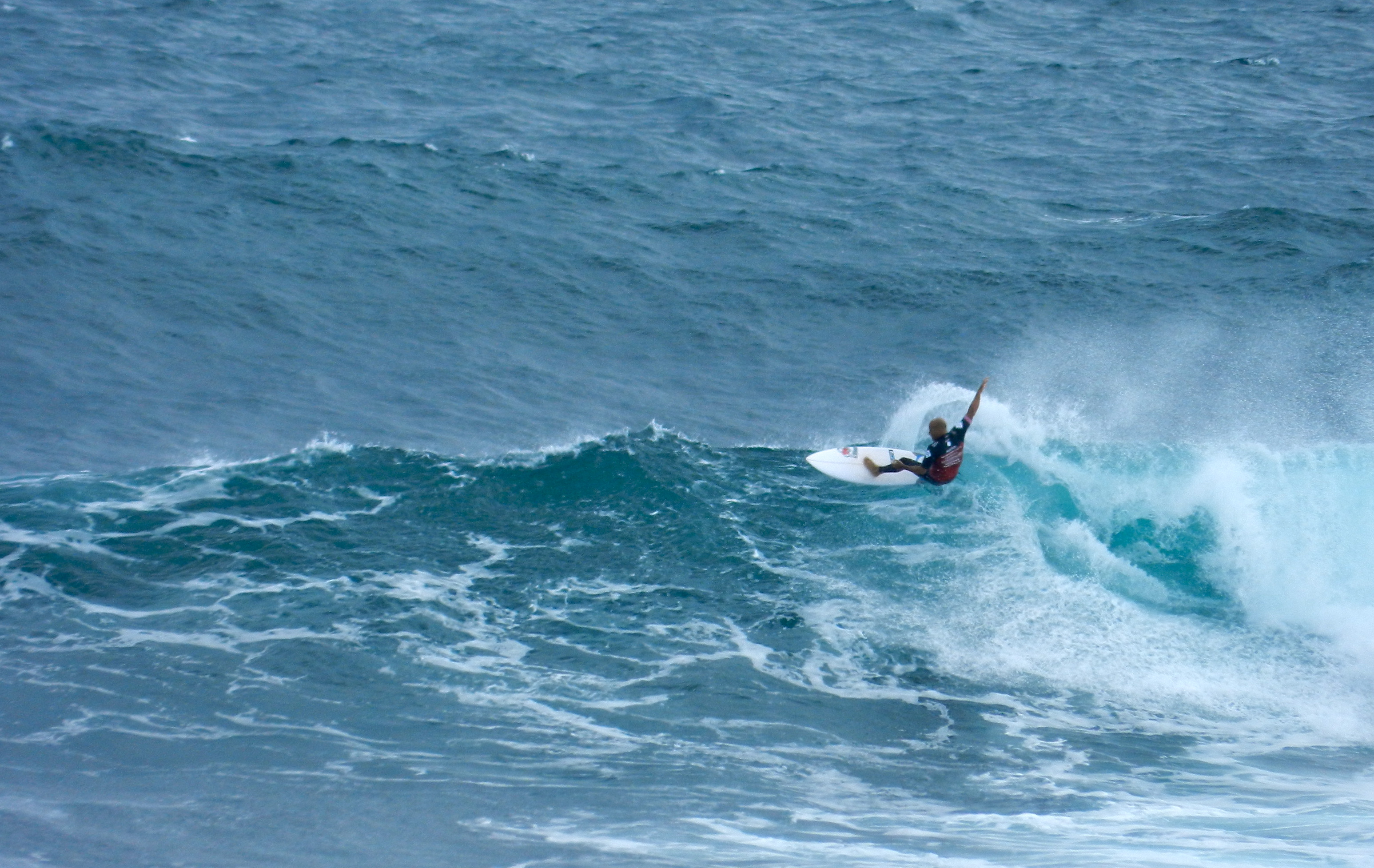
Dunes, Exmouth (WA)
Hollow and peeling waves with intense long rides. You are almost guarantee to be on your own here. Far away from everything and everyone, these waves will be yours if you are not scared of sharks. Otherwise Cape Range National Park offers lots of beautiful beaches with snorkeling spots or great walks through Yardie Creek. You will satisfy your desire of wilderness at least.

Cable beach, Broome (WA)
The last one on the list is probably the most remote one. It is also the last opportunity to surf before reaching the East coast, if you are heading to Northern Territory. This is the warmest water where I surfed ever (around 28°C). Tiny waves, shallow water and sandy beaches, a paradise for beginners.

Important surf rules
Choosing the right surf spot
Depending on how advanced your surfing level is, you will have to decide where to play in the waves. When making the decision whether a surf spot is suitable for you, take your time and consider all factors. Just because it is a beach break, meaning the waves are braking on sand, not on rocks, does not mean that it is safe for a beginner for example. On the contrary, beach breaks can be very heavy with hollow waves and strong rips. These make entering and exiting the water rather difficult, especially if the spot is surrounded by cliffs or a steep beach.
The line-up
It depends on what kind of break you are at. At a point break or a reef for example, the waves break pretty regularly. Thus, when you paddle out you should wait your turn. Make sure the people who had been sitting and waiting there before you go first. However, some people might actually not try to get onto the incoming wave, so observe and then choose which wave you want to go for.
At a beach break it is a different story, as peaks shift quite a bit. Hence, when you paddle out and a wave is rolling towards you, better make sure nobody is already sitting there waiting for this wave. In general it is more fun for everybody if you look out for each other and make sure everybody get their fair share of waves.
Surf Rules on right of way
To begin with, no matter if you are on a beach, a point or a reef, the person closest to the peak, the place where the wave will break, has right of way. If there are three people paddling for a wave for example, you’ll have to quickly check who is closest to the peak and pull out if it’s not you. This is the most important rule, but of course there are some exceptions. If another surfer has started paddling for a wave before you for example, he or she should have the right of way. However, if you are on a long board or SUP, you can get much quicker on waves than with a short board. So don’t take advantage of these surf rules if you want to avoid angry looks.
It also happens that you are sitting too close to the peak or even inside it. If you notice this quick enough and figure you might wipe out, safe yourself the pain. Just shout out to the person next to you, who is probably in a better position, to have the wave. Even if other surfers ignore these surf rules, it is good practice to make sure you’re on the safe side. This way you get the most out of your session.
Surfing in Australia – not always harmless
Surfing in Australia is an iconic activity that draws enthusiasts from around the globe, captivated by the country’s world-renowned waves and surf culture. However, the pursuit of the perfect wave is not always without risk.
First, you should be aware of the dangers, keep an eye out for the best conditions, tides and weather forecasts. The best way to learn how a surf spot works is to talk with locals and take time to observe the waves.
Remote surf spots have most of the time no signs of life around. An empty and quiet place supplies the opportunity to enjoy the line-up by yourself. However, you need to be careful with potential swell magnets, rocks coming to the surface at low tide and obviously sharks.
Some rules are necessary to enjoy at best those empty lineups with “untouched“ waves. One day, you will stop your van on the roadside in the middle of nowhere and you will discover a perfect wave with nobody around. Then, first thing you want to do is jump into the water because it’s very tempting. But you will have to restrain yourself a few minutes before catching these perfect waves.
Australian waters are home to a variety of marine life, including some species that can pose significant dangers to surfers, such as sharks, jellyfish, and strong riptides. Shark encounters, while relatively rare, do occur. Sharks like warm and shallow water as much as surfers. Therefore, we have to learn how to all live together. Even though rather utopian, the second option is to paddle away.
Additionally, Australia’s powerful ocean currents and riptides have been known to catch even the most experienced surfers off guard, leading to dangerous situations and, in some cases, rescues. It’s crucial for surfers, both local and visiting, to respect the ocean’s power, stay informed about local conditions and marine life activity, and always surf within their limits.




















